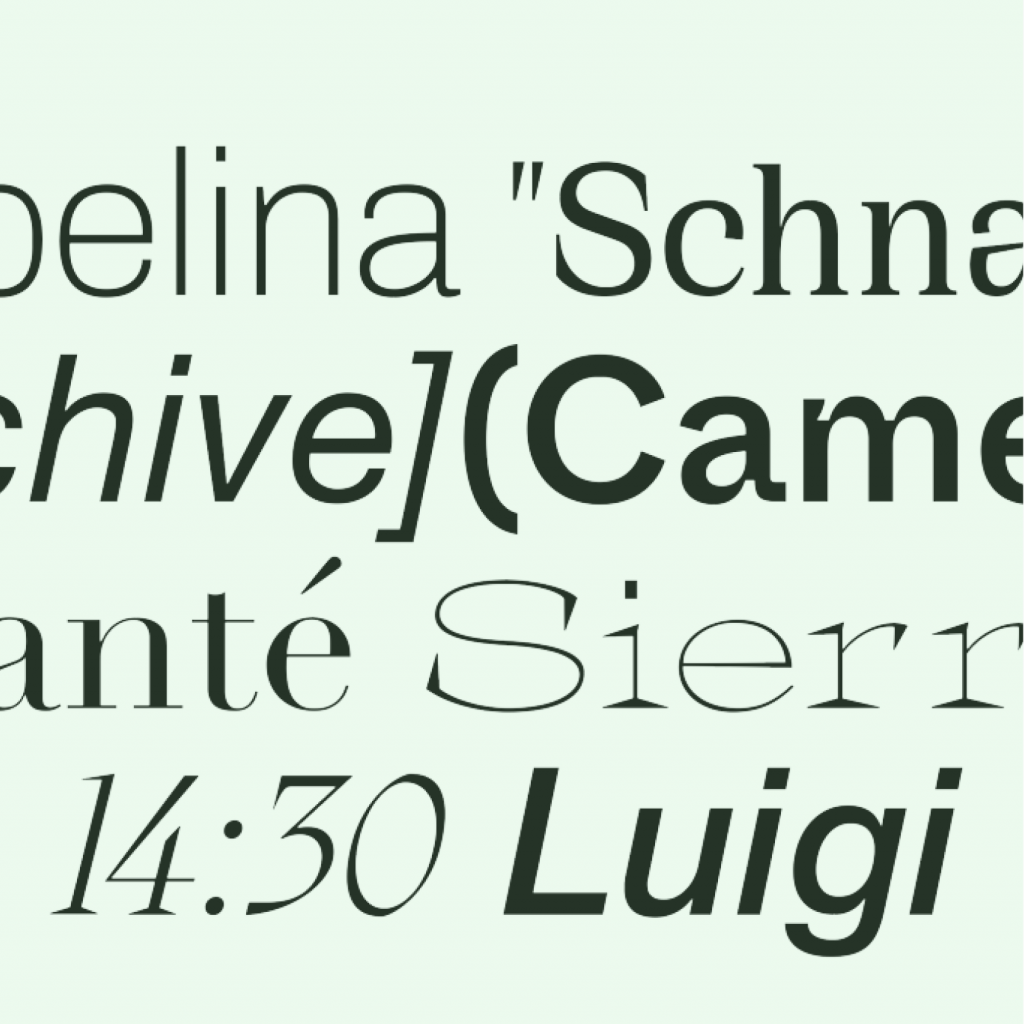Why WhatsApp API can be a powerful tool for marketing
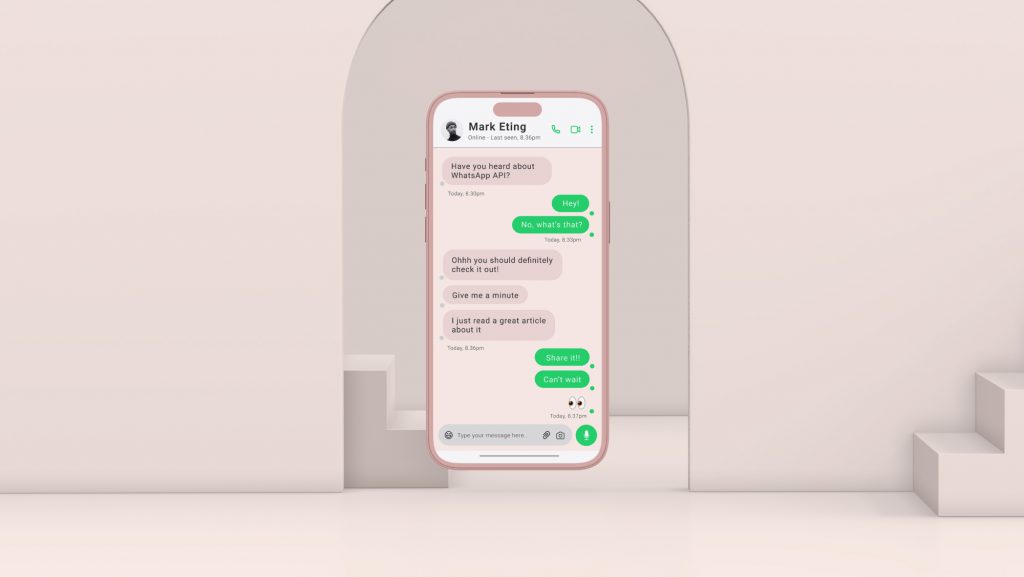
Get ahead with WhatsApp API
Whether you are a big texter or not, consider turning your brand into one. Currently, only 20% of marketers use WhatsApp as a marketing channel, so here's your chance to get ahead of the competition.
What’s new?
Google My Business chats, Whatsapp Business Shops and Messenger Business Inboxes have become our everyday tools to offer a better customer experience for a while now. But here’s the thing: these conversations are mostly manually monitored, limiting implementation possibilities.
To reach global audiences – and have conversations with thousands of people at the same time while gaining access to data – you need a fully programmatic and automated solution. And that’s what WhatsApp API offers.
How does it work?
Here are a few good examples to learn from and understand the possibilities for your brand:
As a Swiss agency, we are starting the list with the Swiss supermarket chain Migros. Using WhatsApp API, they send weekly notifications that let their customers know about the best deals in their local Migros. It’s easy but effective. Having tested it for a week, we can see it already influencing our shopping decisions. For instance, one of our team members found herself looking for fish recipes for dinner — seconds after getting a notification about a good deal for the salmon in her local Migros.
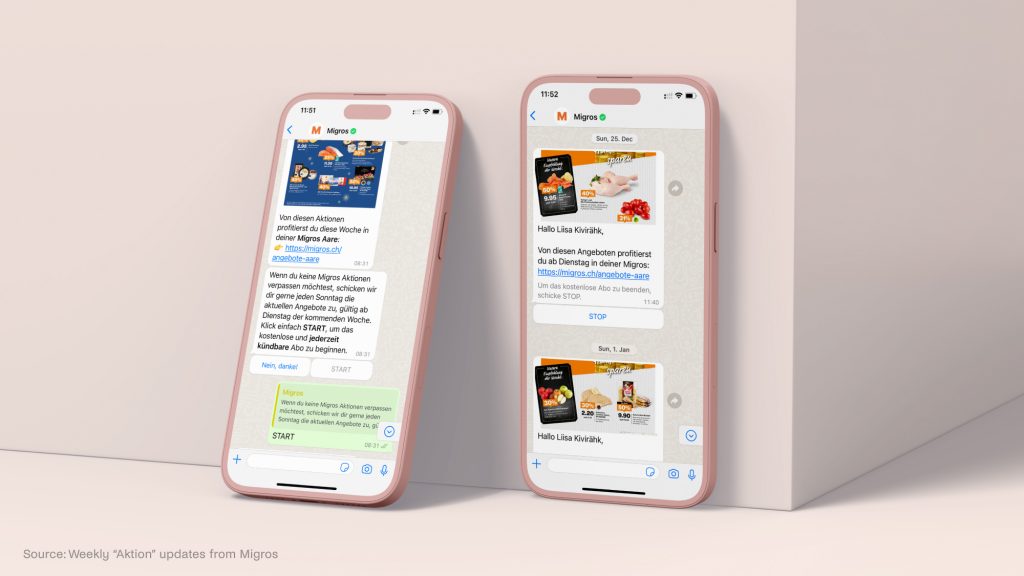
We’ve also tested Zurich Airport’s solution that sends you updates about your flight status. And we must admit — the usually stressful airport experience was suddenly much more pleasurable, thanks to having all the information you need on your phone. No need to check the screens every five minutes, and more time to smell perfumes. You can also use the same logic (giving people the information they care about) in various marketing campaigns to boost engagement, sales, or brand loyalty.
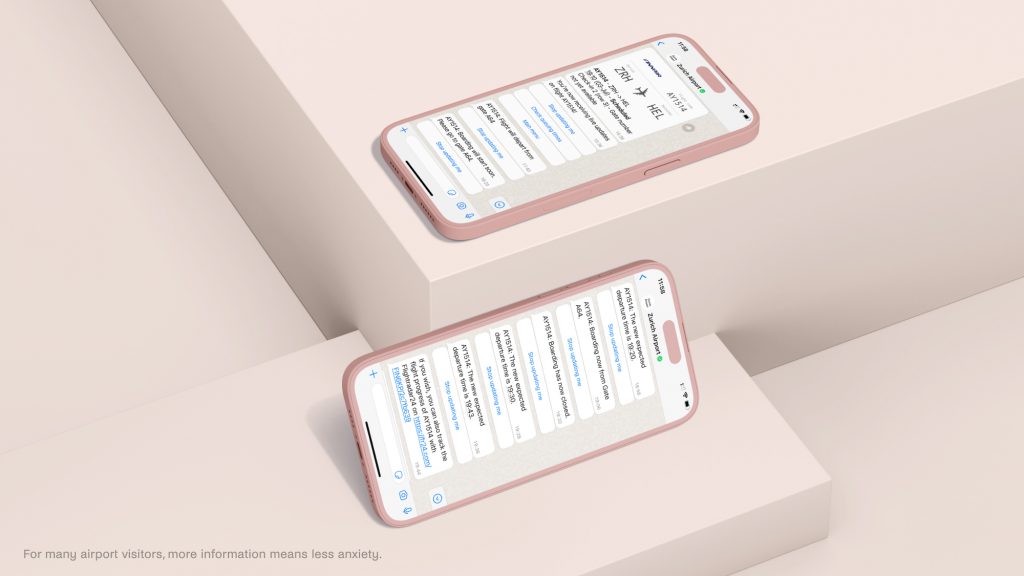
One of the first luxury brands to use WhatsApp for marketing was Dior Beauty. To launch its new lipstick, Dior created an “exclusive WhatsApp group”. If you joined the group, you received access to themed videos, exclusive behind-the-scenes footage, conversations with a K-pop star Jisoo, an Instagram filter, and, of course, links to buy the product.
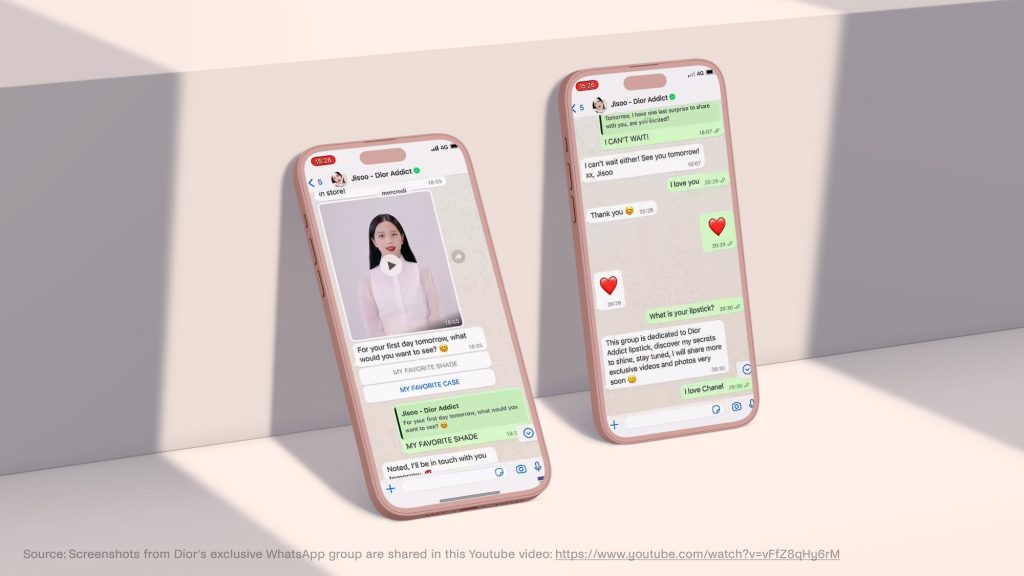
Maggi’s virtual cooking course for its German market is also a great example of using WhatsApp for educational content. The automated conversation gives you step-by-step instructions, shares videos for specific cooking techniques, answers questions, and even provides shopping lists. Only three months after the launch of their Whatsapp experience, Maggi saw a 4.2-point lift in standard ad recall and a 3-point lift in campaign awareness.
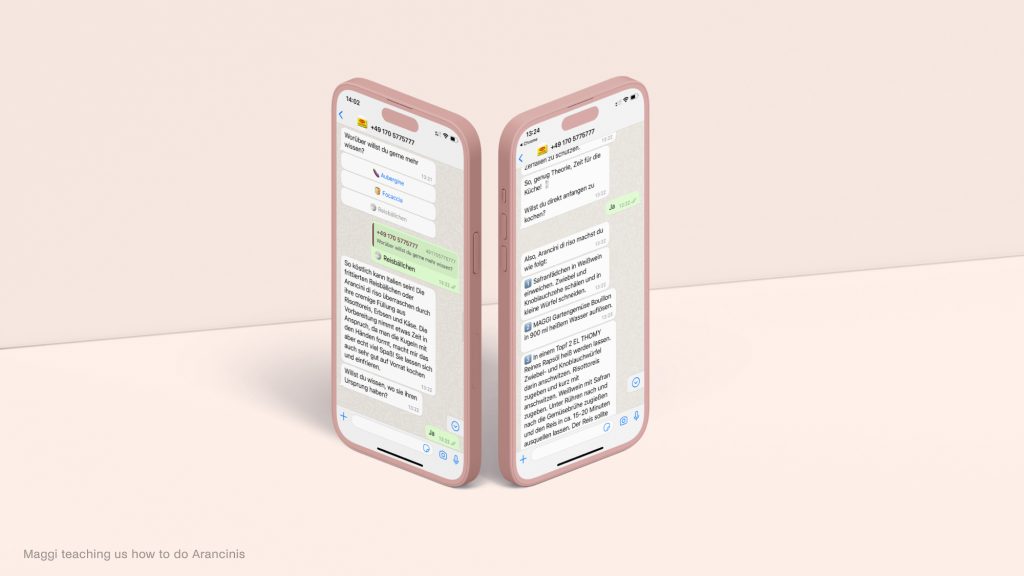
How to plan smartly?
As usual, the best results happen if you have everything planned out. So here are some things you should consider before starting:
WhatsApp API has no front-end interface and needs to be separately integrated into a business software. For this, you need a partner who can help you develop the conversation path with template messages, special solutions, etc.
The first 1,000 conversations per month for each business account are free. After that, WhatsApp charges you depending on who initiates the conversations: a user or a business.
- If a user starts a conversation, the business has 24 hours to send a free-form message back.
- If a business wants to start a conversation outside the 24-hour window, the message needs to follow a message template.
To get people to your WhatsApp chat, you can create ads on Facebook or Instagram that take you to the desired destination. For this, you need to select “Click to message” as an ad type and choose “WhatsApp” or “messaging apps” as a conversion location. It’s also good to know that you will not get charged when a user messages your business using a call-to-action button on Ads that click to WhatsApp or a Facebook Page CTA.
When designing the conversation flow, choose interactive messaging options where users don’t have to type: like list messages and reply buttons. It makes the conversation more effortless, plus it rules out any possibility of misspellings.
WhatsApp Payments are still in the works. Currently, they are only available in India, Brazil (for personal use), and the US (for some users). Luckily, many external partners are offering to create and post links in a chat that lead to payment platforms, like PayPal.
And finally, use a tone of voice that people feel comfortable texting. In communication, it takes two to tango. And nobody wants to tango with a stiff partner.

